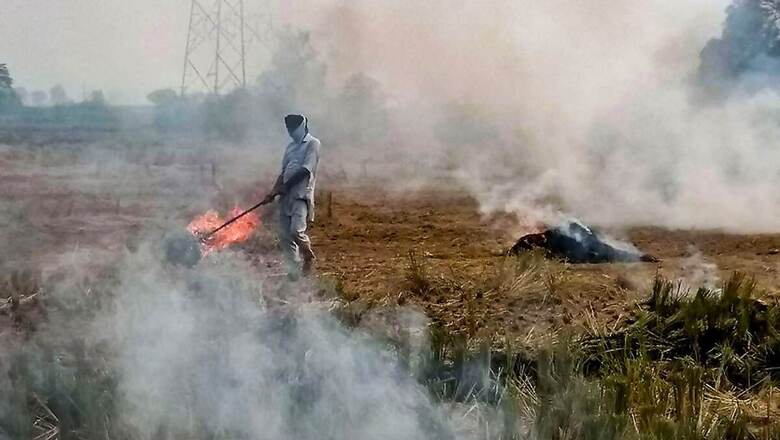
views
Even as the Punjab Pollution Control Board (PPCB) imposed a fine of Rs 12.25 lakh in 460 paddy stubble burning cases in the state, data shows that the cases have only quadrupled compared to last year in the corresponding period. However, with an Air Quality Index (AQI) of 47, Bathinda remains in good’ category, becoming the only city in North India to still have good quality air.
All other major cities in Punjab, including Jalandhar, Khanna, Patiala, Mandi Gobindgarh and Amritsar fall under the moderate. Ludhiana falls under the ‘satisfactory’ category, reported Indian Express.
Bathinda has, in the past, remained one of the most polluted cities during the harvesting season with the AQI falling under the ‘hazardous’ limit.
The data available at Central Pollution Control Board (CPCB) website on Saturday showed that Bathinda’s air had presence of 47 respirable suspended particulate matter (RSPM) per cubic metre (mg/cm). The Air Quality Index of 0-55 mg/cm RSPM is considered ‘good’ and between 101 to 220 RSPM is considered ‘moderate’.
The PPCB has imposed a total fine of Rs 12.25 lakh in 460 paddy stubble burning cases in the state, with a senior official on Friday saying that by end of this month one would be able to make a fair comparison whether farm fires have gone up or come down in comparison to previous years.
“In 460 cases, we have imposed a fine (environmental compensation) of Rs 12.25 lakh (between September 21-October 7), out of which we have recovered Rs 70,000,” PPCB Member Secretary, Krunesh Garg said.
The official said as per data till October 7, 1692 incidents were reported by satellite imagery, but during field visits by PPCB officials no stubble burning was observed in 763 cases. A satellite gives data, but sometimes there are other kinds of fire which is not stubble burning, he said.
Majority of the stubble burning cases that have been reported so far in the state were from Amritsar, Tarn Taran, Patiala and Gurdaspur districts. Notably, 8,000 nodal officers have been appointed in paddy growing villages of Punjab this year to check stubble-burning.
Punjab Chief Minister Amarinder Singh had recently appealed to farmers not to burn crop residue, as it could aggravate COVID-19 conditions apart from leading to pollution. Seeking the support and cooperation of farmers in preventing stubble burning amid the COVID-19 pandemic, the chief minister had said that experts have warned it could have serious implications for people already suffering from lung and other diseases.
To effectively curb stubble burning during the paddy harvesting season, the PPCB had recently ordered that combine harvester machines without functional Super Straw Management System (SMS) will be impounded. SMS is a piece of machinery attached with the combine harvester machine, which cuts the standing paddy straw into small pieces and spreads it uniformly in the field. The farmers then are not required to burn paddy straw before sowing the next crop.
Meanwhile, the ANI on Sunday reported that the air quality in Delhi has started deteriorating due to rise of pollutants in the atmosphere. Visuals from Akshardham showed the structure enveloped in a cloud of smog on Sunday morning.
The AQI in the national capital on Sunday stood at 264 in ITO, at 228 in Patparganj, at 235 in RK Puram and 246 in Rohini, all four in ‘poor’ category, according to Delhi Pollution Control Committee (DPCC) data.
Read all the Latest News and Breaking News here




















Comments
0 comment